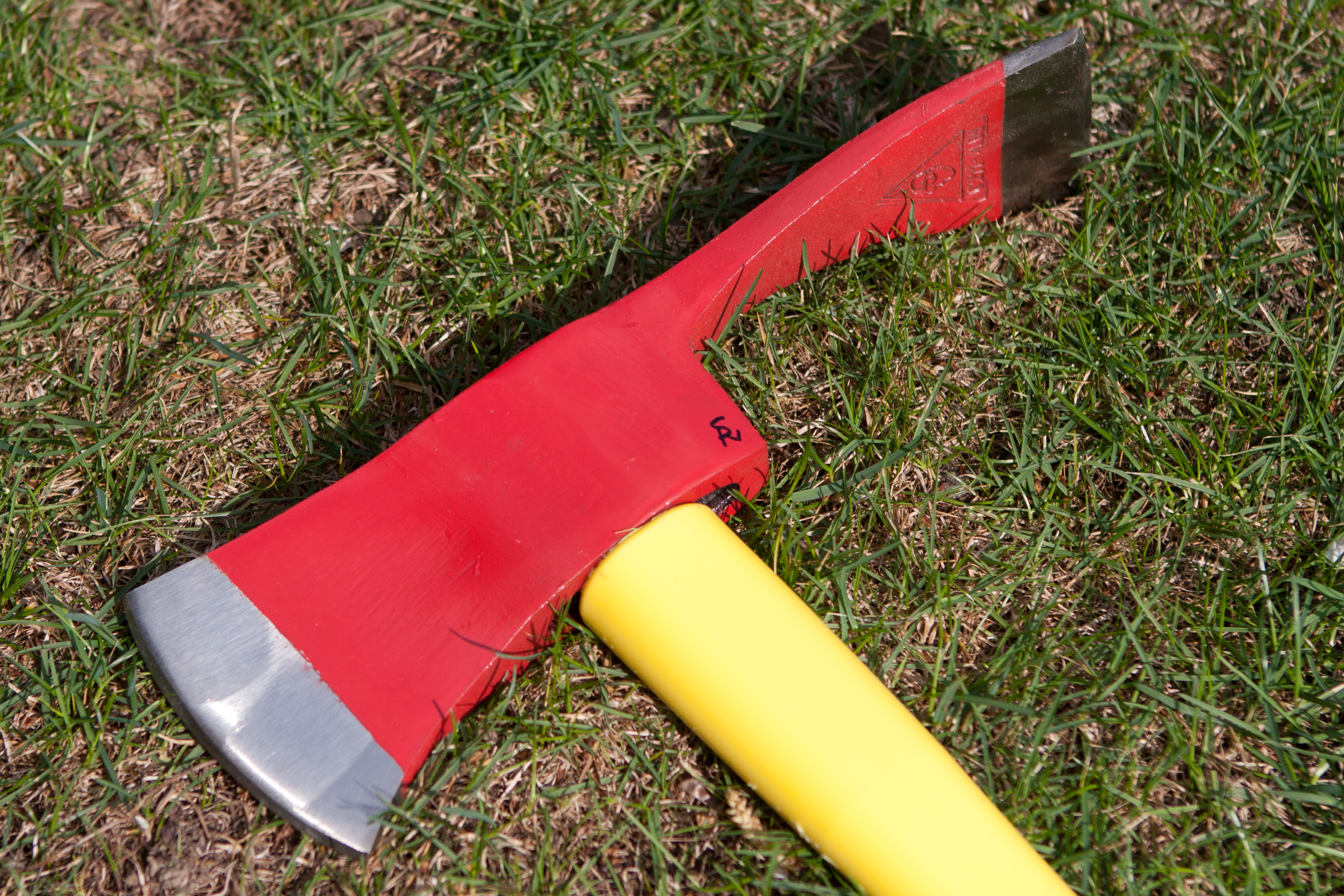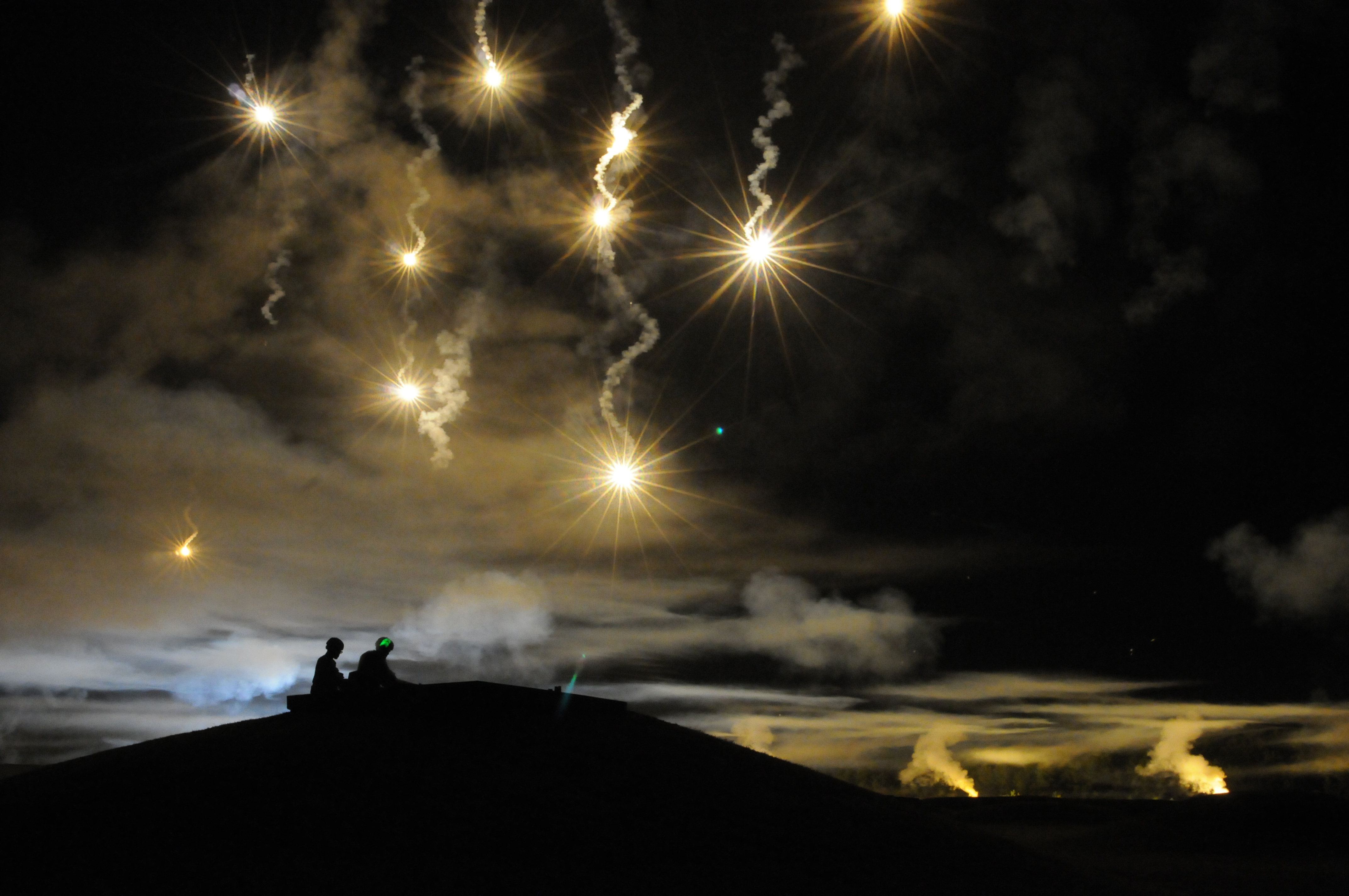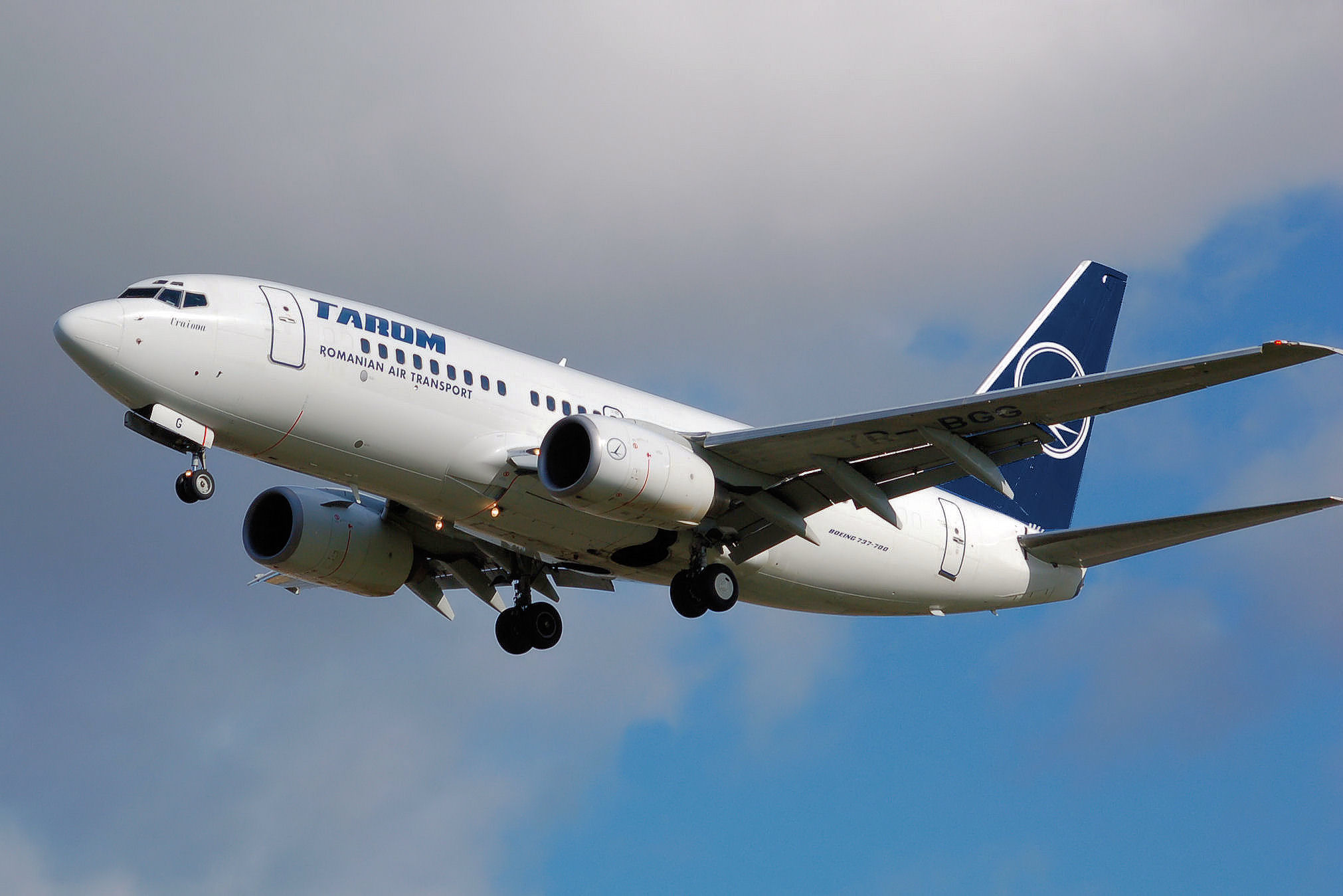|
Wildfire Suppression Equipment And Personnel
Wildfire suppression equipment and personnel is part of the science of fire fighting focusing on the use of specialized equipment, training and tactics to effectively control, surround and eventually extinguish a natural cover fire. There are several specially designed tools that through their function and user training, perform specialized tasks that are specific to natural cover firefighting. This is used together in conjunction with the general understanding of the behavior of fire to form a viable plan of attack. Personnel ''PPE'' or personal protective equipment is generally standardized for a certain type of team or crew. Smokejumpers for example require more protective equipment because of their method of delivery into the fire. Ordinarily, all firefighters regardless of assignment, require durable fire recommended eight inch (203 mm) minimum boots, gloves, Nomex pants and shirt (typically green pants and a yellow shirt), a hard hat (sometimes full brim), Walkie-talk ... [...More Info...] [...Related Items...] OR: [Wikipedia] [Google] [Baidu] |
Personal Protective Equipment
Personal protective equipment (PPE) is protective clothing, helmets, goggles, or other garments or equipment designed to protect the wearer's body from injury or infection. The hazards addressed by protective equipment include physical, electrical, heat, chemicals, biohazards, and airborne particulate matter. Protective equipment may be worn for job-related occupational safety and health purposes, as well as for sports and other recreational activities. ''Protective clothing'' is applied to traditional categories of clothing, and ''protective gear'' applies to items such as pads, guards, shields, or masks, and others. PPE suits can be similar in appearance to a cleanroom suit. The purpose of personal protective equipment is to reduce employee exposure to hazards when engineering controls and administrative controls are not feasible or effective to reduce these risks to acceptable levels. PPE is needed when there are hazards present. PPE has the serious limitation th ... [...More Info...] [...Related Items...] OR: [Wikipedia] [Google] [Baidu] |
Wildland Fire Tender
A wildland water tender is a specialized vehicle capable of bringing water, foam, or dry chemicals to fire trucks in the field that are engaged on the fireline. Water tenders have a large truck mounted tank that carries a minimum 1,000 gallons and up to 4,000 gallons of water. These vehicles are specifically designed for fire fighting often with four-wheel drive, rugged suspension and high wheel clearance for mountainous dirt road conditions. According to the National Fire Protection Association, if the apparatus will be used primarily for outdoor and wildland responses, then it is to be considered a wildland fire apparatus and must conform to NFPA 1906. Support water tenders have larger water tanks and are staffed with one person. They deliver water to fire engines and large portable tanks that are connected to hose lays (hose rolled out on the ground for knocking down fires and for mop up). Tactical water tenders are capable of performing some of the functions of a wildland fir ... [...More Info...] [...Related Items...] OR: [Wikipedia] [Google] [Baidu] |
Pulaski (tool)
The Pulaski is a special hand tool used in fighting fires, particularly wildfires, which combines an axe and an adze in one head. Similar to a cutter mattock, it has a rigid handle of wood, plastic, or fiberglass. The Pulaski is used for constructing firebreaks, able to both dig soil and chop wood. It is also well adapted for trail construction, and can be used for gardening and other outdoor work for general excavation and digging holes in root-bound or hard soil. The axe blade of the Pulaski is the primary cutting edge, while the adze blade is secondary; this is the opposite of the cutter mattock, in which the adze blade is the larger of the two. The invention of the Pulaski is credited to Ed Pulaski, an assistant ranger with the United States Forest Service in 1911. Similar tools were introduced in 1876 by the Collins Tool Company. A tool that serves the same purpose was used in the Alps for over 300 years for planting trees ( Wiedehopfhaue) or the dolabra in anci ... [...More Info...] [...Related Items...] OR: [Wikipedia] [Google] [Baidu] |
McLeod (tool)
A McLeod tool (or rakehoe) is a two-sided blade — one a rake with coarse tines, one a flat sharpened hoe — on a long, wooden handle. It is a standard tool during wildfire suppression and trail restoration. The combination tool was created in 1905 by Malcolm McLeod, a United States Forest Service ranger at the Sierra National Forest. The McLeod was originally designed to rake fire lines with the teeth and cut branches and sod with the sharpened hoe edge. It is also used for finishing and maintaining hiking trails. Common issues Because of its large and sharp head, the McLeod is an awkward tool to transport and store, and is often considered undesirable. Some McLeod tools are made with a removable blade to partially mitigate this problem. Ideally, it is carried with the tines pointing toward the ground for safety, with a sheath over the cutting edge. The mass distribution makes it difficult to carry in this orientation consistently. See also * Driptorch * Fire ... [...More Info...] [...Related Items...] OR: [Wikipedia] [Google] [Baidu] |
Flare (pyrotechnic)
A flare, also sometimes called a fusée, fusee, or bengala in some Latin-speaking countries, is a type of pyrotechnic that produces a bright light or intense heat without an explosion. Flares are used for distress signaling, illumination, or defensive countermeasures in civilian and military applications. Flares may be ground pyrotechnics, projectile pyrotechnics, or parachute-suspended to provide maximum illumination time over a large area. Projectile pyrotechnics may be dropped from aircraft, fired from rocket or artillery, or deployed by flare guns or handheld percussive tubes. History The earliest recorded use of gunpowder for signaling purposes was the 'signal bomb' used by the Chinese Song Dynasty (960–1279) as the Mongol-led Yuan Dynasty (1271–1368) besieged Yangzhou in 1276. These soft-shelled bombs, timed to explode in midair, were used to send messages to a detachment of troops far in the distance. Another mention of the signal bomb appears in a text dating ... [...More Info...] [...Related Items...] OR: [Wikipedia] [Google] [Baidu] |
Driptorch
A driptorch is a tool used in wildfire suppression, controlled burning, and other forestry applications to intentionally ignite fires by dripping flaming fuel onto the ground. Description The driptorch consists of a canister for holding fuel with a handle attached to the side, a spout with a loop to prevent fire from entering the fuel canister, a breather valve to allow air into the canister while fuel is exiting through the spout, and a wick from which flaming fuel is dropped to the ground. The wick is ignited and allows the fire to be directed as needed. The spout and wick can be secured upside down inside the canister for storage or transport. Typically the fuel used is a mixture of gasoline and diesel with a ratio of 30% to 70% respectively, although, the amounts may need to be adjusted according to fuel and weather conditions. Sometimes heavier oils are used to increase adhesion of the liquid fuel to the vegetation, and increase burn time and heat. Variations of the dript ... [...More Info...] [...Related Items...] OR: [Wikipedia] [Google] [Baidu] |
Airlift
An airlift is the organized delivery of supplies or personnel primarily via military transport aircraft. Airlifting consists of two distinct types: strategic and tactical. Typically, strategic airlifting involves moving material long distances (such as across or off the continent or theater), whereas a tactical airlift focuses on deploying resources and material into a specific location with high precision. Depending on the situation, airlifted supplies can be delivered by a variety of means. When the destination and surrounding airspace is considered secure, the aircraft will land at an appropriate airport or airbase to have its cargo unloaded on the ground. When landing the craft or distributing the supplies to a certain area from a landing zone by surface transportation is not an option, the cargo aircraft can drop them in mid-flight using parachutes attached to the supply containers in question. When there is a broad area available where the intended receivers hav ... [...More Info...] [...Related Items...] OR: [Wikipedia] [Google] [Baidu] |
Aerial Firefighting
Aerial may refer to: Music * ''Aerial'' (album), by Kate Bush * ''Aerials'' (song), from the album ''Toxicity'' by System of a Down Bands * Aerial (Canadian band) *Aerial (Scottish band) *Aerial (Swedish band) Performance art *Aerial silk, apparatus used in aerial acrobatics * Aerialist, an acrobat who performs in the air Recreation and sport *Aerial (dance move) * Aerial (skateboarding) * Aerial adventure park, ropes course with a recreational purpose * Aerial cartwheel (or side aerial), gymnastics move performed in acro dance and various martial arts *Aerial skiing Aerial skiing or aerials is a freestyle skiing discipline where athletes ski down a slope to launch themselves off a kicker (a vertically inclined ramp) and perform multiple twists and flips before landing on an inclined landing hill. Aerialists ..., discipline of freestyle skiing * Front aerial, gymnastics move performed in acro dance Technology Antennas * Aerial (radio), a radio ''antenna'' or t ... [...More Info...] [...Related Items...] OR: [Wikipedia] [Google] [Baidu] |
Fixed Wing
A fixed-wing aircraft is a heavier-than-air flying machine, such as an airplane, which is capable of flight using wings that generate lift caused by the aircraft's forward airspeed and the shape of the wings. Fixed-wing aircraft are distinct from rotary-wing aircraft (in which the wings form a rotor mounted on a spinning shaft or "mast"), and ornithopters (in which the wings flap in a manner similar to that of a bird). The wings of a fixed-wing aircraft are not necessarily rigid; kites, hang gliders, variable-sweep wing aircraft and airplanes that use wing morphing are all examples of fixed-wing aircraft. Gliding fixed-wing aircraft, including free-flying gliders of various kinds and tethered kites, can use moving air to gain altitude. Powered fixed-wing aircraft (airplanes) that gain forward thrust from an engine include powered paragliders, powered hang gliders and some ground effect vehicles. Most fixed-wing aircraft are flown by a pilot on board the craft, but so ... [...More Info...] [...Related Items...] OR: [Wikipedia] [Google] [Baidu] |
Helicopter
A helicopter is a type of rotorcraft in which lift and thrust are supplied by horizontally spinning rotors. This allows the helicopter to take off and land vertically, to hover, and to fly forward, backward and laterally. These attributes allow helicopters to be used in congested or isolated areas where fixed-wing aircraft and many forms of STOL (Short TakeOff and Landing) or STOVL (Short TakeOff and Vertical Landing) aircraft cannot perform without a runway. In 1942, the Sikorsky R-4 became the first helicopter to reach full-scale production.Munson 1968.Hirschberg, Michael J. and David K. Dailey"Sikorsky". ''US and Russian Helicopter Development in the 20th Century'', American Helicopter Society, International. 7 July 2000. Although most earlier designs used more than one main rotor, the configuration of a single main rotor accompanied by a vertical anti-torque tail rotor (i.e. unicopter, not to be confused with the single-blade monocopter) has become the most ... [...More Info...] [...Related Items...] OR: [Wikipedia] [Google] [Baidu] |



.jpg)



